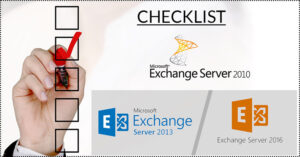Microsoft Outlook is undoubtedly the most widely used email client all around the world. OST and PST are two types of Outlook data files used by Microsoft Outlook. The POP accounts store their mailbox information in PST files. On the other hand, IMAP accounts, Exchange accounts, Outlook 365 accounts, and Outlook.com accounts store their mailbox information in OST files. But sadly, the Outlook data file is prone to corruption just like any other computer file. In this article, we are going to discuss the most common reasons for frequent OST file corruption.
OST – Office Storage Table
OST aka Offline Storage Table is an Outlook data file created by Microsoft Outlook that allows you to work offline when you are not connected to the Internet. The next time you connect to the Internet, it will synchronize the changes with the Microsoft Exchange Server. Such an ability to work offline is very useful when there is limited or unreliable Internet connectivity.
An OST file stores the copy of your mailbox data which include emails, contacts, tasks, calendar data, etc. of an Exchange, Office 365, or Outlook.com account. The Offline data file is stored on your local system so that you can easily access your mailbox data even if the Internet connection is not available. When you are working offline, you can check or create new appointments, search or add new contacts, even you can read and write emails. Remember, whatever changes you make in the offline mode will not be synchronized with your account on Exchange Server until the Internet connection is re-established. Although OST file is very similar to the personal storage table (PST) file. It can only store the mailbox data in offline mode.
Check Out Our Latest Arrival on: PST File Corruption
OST File Corruption
The overall functionality of an Offline Storage Table definitely looks smooth. However, there is a major drawback. Just like any other computer file, an OST file is not immune to corruption. There are various reasons for OST file corruption, some of the most common ones are listed below:
Virus Infection
One of the most common reasons behind any type of file corruption is a virus. It is a malware (malicious software) that can easily infect a file by different ways, such as overwriting the file with junk data, deleting some part of the file, etc. Both Outlook data files, i.e. OST and PST, are more vulnerable to computer viruses. Whenever an OST file is corrupted due to virus, it becomes inaccessible. Virus infection is likely to occur if you are not using a good Antivirus or Firewall software.
Improper Termination of Outlook
Whenever you close or terminate a running application abnormally, it may lead to unfavorable consequences. This action may not only affect the software application but also the files associated to it. For example, you are working on Outlook and an OST file is opened. After some time, you close Microsoft Outlook improperly. The next time when you will try to open that very same file, you may find it corrupted.
Unexpected Power Outage
Sudden power failure is one of the most harmful things not only for the computer but also for the software applications and the files associated to them. For example, the synchronization process is going on and suddenly the computer shuts down due to unexpected power failure. This may corrupt the OST file. An unexpected power outage can also cause hardware failure, and sometimes even hard disk crash.
Oversized Outlook Data File
Remember, an Outlook data file has a definite size limit. This means it cannot store the mailbox data more than its maximum size limit. Whenever the Outlook data file reaches the maximum size, it starts creating performance issues. Sometimes the situation becomes worse when the file crosses the maximum size limit. In such a situation, file corruption is more likely to occur in offline storage tables.
Poor or Abrupt Network Connection
Internet connection plays an important role during the synchronization process. If any of the network devices stop working while the OST file is being synchronized with your Exchange Server account, you are likely to face OST file corruption. There are various reasons due to which a network device may stop working.
Storage Media Failure
Hard disk drive is the main storage device that stores almost everything. Any sort of issue or error in the hard disk drive can put all your data at high risk of loss. Hard disk crash is very common that can happen due to the two most common reasons: logical failure or physical failure. Whenever a hard disk crashes down, all the stored data become inaccessible or corrupted. Since the OST files are stored on a local system, they may become corrupted due to storage media failure.
Incompatible Outlook Plugin
Third-party plugins are very useful Outlook for users in many ways. However, some installed plugins can slow down your Outlook performance and may also lead to Outlook data file corruption. This mostly happens when you are using some faulty plugins or the plugins which are not compatible with your Outlook version.
Whatever the reason is, if the OST file has corrupted, there is no way to open it until you repair OST file. Although Microsoft provides built-in repair utility to repair Outlook data file, it may not work in a case of severe corruption. Moreover, the Integrity Check tool aka scanost.exe utility is not available with Microsoft Outlook 2010 and later versions. In such a situation, you should always consider using a professional solution. There are many vendors in the online marketplace which provide 3rd party tools to repair OST file and convert it into PST format. The OST to PST Converter tool from Shoviv Software is the most recommended OST converter tool with an easy and interactive user interface.
Conclusion
In this article, we have discussed the most common reasons for frequent OST file corruption. Also, we have learned how to repair OST file and convert it into PST format in order to save the mailbox data from being lost.
Check this post, it might help you to accomplish your job: https://www.shoviv.com/exchange-ost-recovery.html
- How to Backup and Restore Emails in Webmail? - March 25, 2025
- How to Migrate Outlook to New Computer? - February 15, 2025
- Fix If Outlook Cannot Display the Specific Folder Location - February 1, 2025




